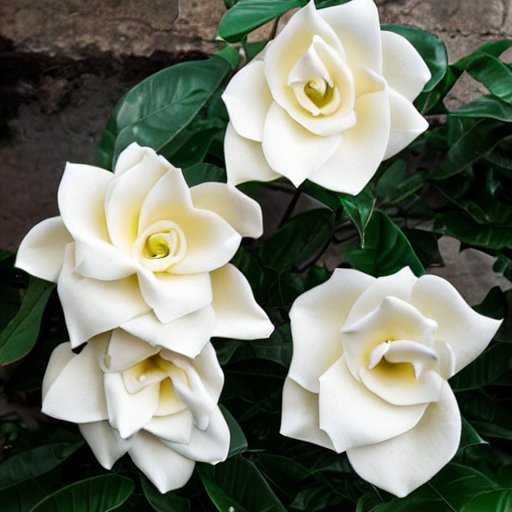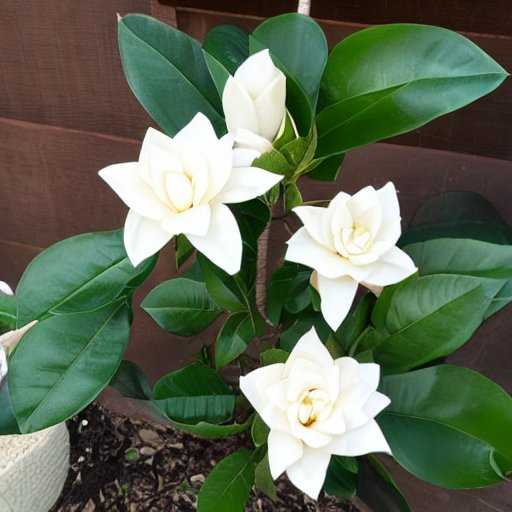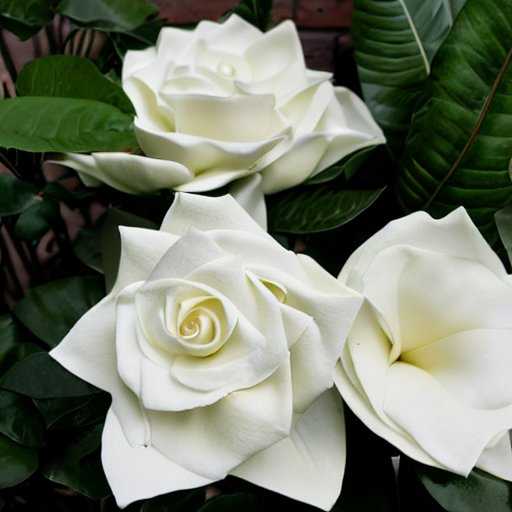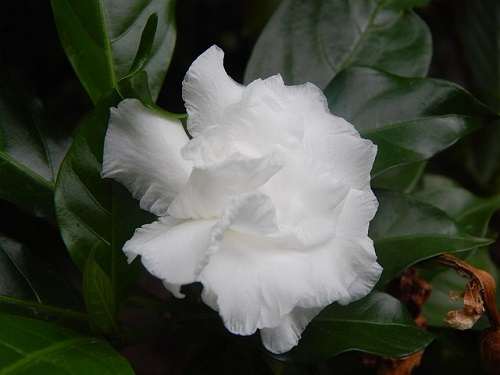Yellowing Gardenia leaves? Don’t worry—many gardeners have this problem. To avoid more harm to your treasured plants, act soon. Have you tried vinegar? In this blog post, we’ll explore how vinegar can help revive your Gardenia and bring back its lush green leaves.
My Gardenia plant began to turn yellow one day, I noticed. My Gardenia had been flourishing for years, and I had never seen it in such a condition before, so I was concerned about it. I pondered the potential causes of the leaves Yellowing.
I did some study and discovered that too little iron in the soil often results in the yellowing of Gardenia Leaves. I have found vinegar to be an easy home fix for this issue. I thus choose to attempt this cure.
Every month, I put a cup of vinegar and a gallon of water upon my Gardenia. I diligently watched for a while after doing this for many months to see whether it had any effect. I was shocked to see that the fading of the leaves had halted after just a few weeks and that my Gardenia was beginning to appear healthy and bright once again.
I was so happy with the outcomes that I kept using this easy home treatment on all of my other plants. I was relieved to have discovered a natural cure for the yellowing of my Gardenia leaves, and I told my gardening friends about it as well.
Does vinegar help gardenias?
Yes, vinegar works for gardenias. Insufficient iron levels is a primary reason of yellow leaves on Gardenia, which is solved with simple home remedy vinegar. Gardenia plants may have their yellow leaves fixed naturally and affordably by diluting vinegar in a gallon of water once a month. The vinegar’s acidic characteristics assist in balancing the pH of the soil and guard against nutritional deficits, which may result in yellowing. A secure and efficient substitute for artificial fertilizers and pesticides is vinegar.
Here is the best vinegar for your gardenias – Check out today.
Since vinegar is a cheap and natural remedy, many gardeners use it to help maintain the ideal pH level of the soil surrounding their gardenias.
Howard Garrett, an organic gardener, advises mixing one tablespoon of vinegar per gallon of water each time you water a plant to acidify the soil around its weak roots. By increasing the acidity of the soil, this will assist in maintaining the ideal pH level for gardenias.
In addition, vinegar has anti-fungal and insecticidal properties. It may also be used to heal gardenias’ yellow foliage, which are a sign of an iron deficit. Gardeners may use this solution to hydrate their browning gardenias once a month by diluting a cup of vinegar in a gallon of water. Snaky garden pests such as snails, ants, squash bugs, and flies may also be controlled using vinegar.
Gardeners should refrain from pouring or spraying full-strength vinegar straight onto their plants since it may destroy plant leaves and eventually kill plants. When treating gardenias, it’s also crucial to use the proper quantity of vinegar since too much might actually kill the plant.
Does vinegar help gardenias?

A typical home component, vinegar has become more well-liked due to its many uses outside of the kitchen. Many gardeners are curious as to whether vinegar might help their beloved gardenias, which are prized for their vivid blossoms and delicate aroma. Although the acidity of vinegar may affect the pH of the soil, its effects on gardenias are complex and need for careful attention.
Gardenias, sometimes referred to as Gardenia jasminoides in the scientific community, like slightly acidic soil with a pH range of 5.0 to 6.5. Vinegar seems to be the perfect remedy for acid-loving plants like blueberries, citrus trees, rhododendrons, and hydrangeas since it momentarily lowers the pH of the soil. However, vinegar use should be moderated and with prudence when it comes to gardenias.
Use of vinegar too often might hurt gardenias more than it helps. These plants have particular nutritional needs, and drastically changing the pH of the soil might make nutrients less available, resulting in shortages or toxicity. So it’s essential to think carefully before using vinegar as a soil improvement for gardenias.
As a natural pesticide for weed control, vinegar has a potential use with gardenias. Gardenias might develop more slowly as a result of competing with undesirable weeds for vital nutrients, water, and sunshine. The acetic acid in vinegar may aid in preventing the development of weeds when applied directly to them. However, care should be taken to prevent putting vinegar on the leaves of gardenias as this might result in harm.
The use of vinegar as a foliar spray on gardenias is another thing to think about. A diluted vinegar solution, according to some gardeners, may serve as a natural insect repellent, warding off pests. Gardenias may be sensitive to acidic chemicals and are prone to leaf burn, so it’s vital to keep that in mind. Since this is the case, it is wise to test a small area of the plant before spraying vinegar over the full gardenia.
Maintaining an ideal soil pH is crucial to the health of gardenias. It is advised to regularly test the pH levels using a soil testing kit. A properly calculated vinegar application may help gradually reduce the pH if the soil is noticeably alkaline, that is, if it has a high pH that is over the preferred range for gardenias. It’s crucial to keep a careful eye on the pH levels and refrain from making significant changes.
When caring for gardenias, there are other considerations in addition to the usage of vinegar. These plants demand consistently wet soil, sufficient sunshine, and well-drained soil. Watering a plant properly may help avoid problems like leaf spot and fungus illnesses by watering it from the base rather than from the top.
Is apple cider vinegar good for gardenias?

Yes, gardenias benefit from using apple cider vinegar. Acid-loving plants benefit when the pH of the soil is lowered with ACV. The optimal ratio is one ounce of ACV to one gallon of water, however this does not need to be exact in order to have effective effects. The pH of the soil may be lowered by watering gardenias with a vinegar solution, but the results are transient. Vinegar only remains in the soil for a short time, thus plants may need to be treated more than once.
In addition to its advantages as a fertilizer, apple cider vinegar also works well in the garden to combat pests like slugs and snails. It may melt and kill these soft-bodied insects when sprayed on them. ACV also keeps the natural vitamins and minerals that are beneficial to plants since it is unfiltered. Additionally, it may nourish the soil, enhancing the general wellbeing of gardenias and other acid-loving plants.
ACV may be helpful in the garden, but it should only be used sparingly and should never come in touch with the flowers or leaves directly since it might burn them or do other harm. It’s also crucial to remember that not all plants will benefit from vinegar, and that vinegar shouldn’t be the only food source for plants.
Lets learn: Why Are Gardenia Leaves Turning Yellow?

We’ll look at the typical reasons why gardenia plants get yellow leaves and provide workable remedies to help them become healthy again.
- Nutritional Deficiencies: One of the main causes of the yellowing of gardenia leaves is a nutritional shortage. Because these plants need fertile soil to develop, a deficiency in critical nutrients may cause leaf discolouration. Iron, manganese, or other essential nutrients deficiency may cause fading leaves, brown patches, or malformed foliage. It is advised to add organic matter and nutrient-rich fertilizers designed especially for acid-loving plants like gardenias to treat this problem. Regular feeding will encourage healthy leaf development and aid to recover the lost nutrients.
- Gardenias like acidic soil with a pH range between 5.0 and 6.0. Imbalanced soil pH. Too much alkaline soil may make it difficult for plants to effectively absorb nutrients, which can result in their leaves becoming yellow. To find out what pH your gardenia’s soil is at, do a soil test. By adding organic matter to the soil, such as peat moss or pine needles, you may reduce the pH if it is higher than the advised range. Additionally, it is possible to purchase soil supplements that may assist acidify the soil and provide the best conditions for gardenias.
- Insufficient Watering: Gardenia plants may develop yellow leaves as a result of inadequate watering techniques. Underwatering or overwatering may stress the plant and obstruct its absorption of nutrients, which causes leaf discolouration. To grow properly, gardenias need constant moisture that doesn’t get flooded. To avoid waterlogging, it’s crucial to water them well and make sure there is enough drainage. Check the soil’s moisture content often, and alter your watering plan as necessary. Mulching around a plant’s base may assist control soil temperature and moisture retention.
- Environmental Factors: The state of the environment has a big impact on the health of gardenia plants. Extreme heat or cold may stress plants and result in yellowing leaves. Additionally, exposure to strong sunshine or cold air might be detrimental to their health. Consider giving shade during the hot summer months or bringing potted specimens inside during the chilly winters to protect your gardenias from temperature changes. In order to avoid leaf yellowing and to improve plant health overall, it is important to maintain a stable and adequate environment.
- Gardenias are vulnerable to a number of pests and diseases, which might show up as yellowing leaves. Aphids, whiteflies, scale insects, and fungal diseases are typical offenders. These pests prevent the plants from functioning properly by feeding on the sap of the plant or damaging the leaves. Establish a regular inspection schedule to spot any early symptoms of sickness or infestation. Apply the proper insecticides or fungicides to the afflicted plants and carefully follow the directions. Your gardenia leaves will continue to be a brilliant green hue if you practice good pest control and disease prevention.
Gardenia care and maintenance

Gardenia care needs must be understood in order to develop healthy plants:
- Initially, make sure the ground is moist and well-drained. Gardenias need at least an inch of rain (or an equivalent quantity of irrigation) every week, so keep the soil consistently moist but not waterlogged. Use a soil that drains well, such a clay, loam, and sand combination. For gardenias, acidic soil with a pH of 5.0 to 6.5 is ideal.
- Gardenias also need frequent fertilization to encourage healthy growth. Between April and November, fertilize once a month using a nitrogen-rich fertilizer that also contains trace elements. Avoid overfertilizing to avoid damaging the roots.
- Gardenias need direct, powerful light to flourish. They demand some daytime sun protection with some partial shade, especially in hotter climates. If gardenia leaves are exposed to direct sunlight, they may get burned.
- Gardenias need pruning to maintain their shape and promote healthy growth. Early in the fall, lightly trim the plant by removing around 25% of the leaves. As a result, the plant will be motivated to start new development, which will result in more blooms the next season.
- Throughout the winter, gardenia plants may be brought inside and kept in colder locations. Keep the soil moist but not soggy, and place them next to a window that receives a lot of sunshine. Gardenia plants need high humidity to thrive, so keep heaters and other sources of dry air away from them.

About Gardenia
Gardenias are well known for their seductive scent and the unadulterated beauty they provide to their surroundings. The symbolism associated with these flowers only adds to their magical attraction. The most prevalent meanings associated with gardenias’ many color variations are trust, hope, serenity, renewal, and protection. Gardenias represent undying attraction and operate as a link between the material and heavenly realms.
It’s essential to provide gardenias the best growth circumstances if you want to develop healthy plants. Choose a location that has full sun to mild shade. Even though gardenias enjoy full light, they do benefit from little shade throughout the summer to avoid leaf burning and bud loss. It is ideal to expose gardenias to early light and afternoon shade in hot areas.
The proper amount of solar exposure is necessary for floral bud development. Lack of sunlight may result in lanky growth and fewer flowers, while too much sun exposure can hasten the fading of blossoms. For your gardenias to stay healthy and vibrant, you must find the ideal combination of sun and shade.
Conclusion
I hope you find this article “Gardenia Yellow Leaves Vinegar” helpful. If you’re struggling with yellow leaves on your gardenia, vinegar can be a simple yet effective solution. Its acidic properties can help balance the soil pH and prevent nutrient deficiencies that can cause yellowing. Additionally, vinegar is a natural and cost-effective alternative to chemical fertilizers and pesticides. By following the tips in this blog post, you can bring your gardenia back to its former glory and enjoy its fragrant blooms for years to come. Give this vinegar remedy a try and let us know how it works for you.
Related Posts:
